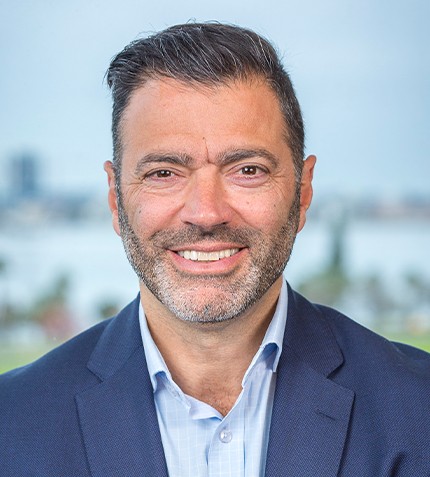
"Port Houston has stood out amongst US ports as the only major container port growing in export-loaded containers, attributed to strong exports of chemicals, PVC, polypropylene, and polyethylene resins."
John Moseley
CHIEF COMMERCIAL OFFICER, PORT OF HOUSTON
Port Houston is the fifth largest container port by TEUs in the US. How has the Port performed in the first half of 2023, after the stellar performance registered in 2022?
We’ve started the year strong relative to the other ports around the country. Port Houston is both a port authority and marine terminal operator of our two container terminals at Barbours Cut and Bayport. Port Houston has stood out amongst US ports as the only major container port growing in export-loaded containers, attributed to strong exports of chemicals, PVC, polypropylene, and polyethylene resins. We’ve continued to commit to keeping our infrastructure at about 20% above demand capacity. Thus far, 2023 loaded export volumes are up 12% compared to last year. Port Houston continues to be the nation's leading port for resins exports, with a 59% share of US resins exports and a 73% share of PE exports in 2022.
This July, Port Houston experienced the highest total container volumes of any previous July on record, handling a total of 344,163 TEUs for the month.
What have been the latest developments/ investments at the Port?
We are investing heavily in both the water and landside. Port Houston has US$1.384 billion budgeted in improvements on the landside alone in the next five years (2023 – 2027). We also expanded our service hours at our two container terminals, opening an hour earlier at 6 a.m.
In 2022, at our Barbours Cut Container Terminal, we added 14 entry gates for a total of 29 gates, upgraded technology and support areas, repurposed 14.5 acres of land for container storage, and renovated wharves and container yards for improved efficiency. We have US$646 million budgeted toward improved wharves, cranes, equipment, and modernization of our container yard in the next five years.
At our Bayport Container Terminal, we’re investing US$738 million through the end of 2027 to add new capacity. We recently received three new super post-Panamax ship-to-shore (STS) cranes and completed the construction of our newest wharf, Wharf 6. This added capacity will enable the Port to service neo-Panamax vessels up to 15,000 TEUs in size when the Bayport Channel portion of the Houston Ship Channel Expansion is completed in 2024. Expanding the channel is a US$1.1 billion project that will be completed in record time.
How have container volumes between Houston and Latin America evolved this year?
Port Houston receives 18% of its container volumes from Latin America, which amounted to 270,371 TEUs through the first half of this year. Latin America's volumes have increased by 3% this year, surpassing the record volumes seen in 2022. Over the past five years, containerized trade between Port Houston and Latin America has grown by 33%.
As the President of BRATECC (Brazil-Texas Chamber of Commerce), could you explain to our audience the synergies between these two locations, especially in terms of the energy transition?
Brazil is our largest trading partner in Latin America for containers, #5 overall. Both regions share commonalities, such as focusing on energy transition and solid agricultural economies. Brazil has one of the world's least carbon-intensive energy sectors, with almost 45% of its primary energy demand met by renewable sources. Port Houston is also committed to sustainability and aims to reach carbon neutrality by 2050 through technology upgrades, infrastructure improvements, and clean energy sources. The Port has already reduced emissions by more than 50% since 2016 and switched to 100% renewable electricity in 2020.
What growth opportunities do you identify for the future?
We have more than a dozen weekly services connecting Latin America and Houston with short transit times. Imports have been a growing opportunity as products can be efficiently and cost-effectively distributed nationwide. We’re also well-suited as an export gateway to Latin America. Ample land, energy access, and a strong workforce make Houston, Texas, a great place to manufacture and consolidate freight destined for Latin America.
I hope our fellow APLA members will consider Houston their first gateway to North America. Port Houston’s vision is to be America’s Distribution Hub for the Next Generation. Based on our performance over the last twenty years and with the support of our customers, we are well on our way to making our vision a reality.










